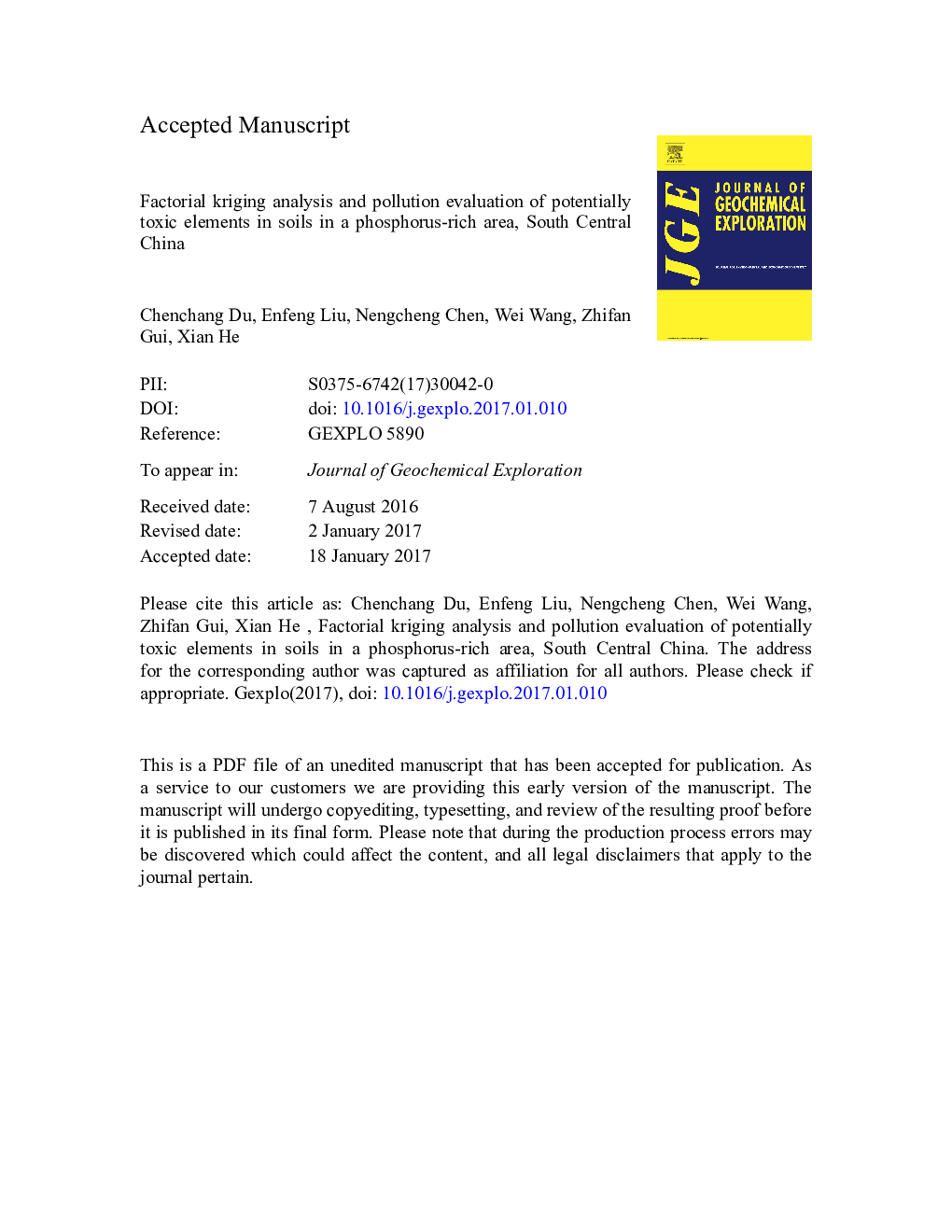| Article ID | Journal | Published Year | Pages | File Type |
|---|---|---|---|---|
| 5754574 | Journal of Geochemical Exploration | 2017 | 37 Pages |
Abstract
Identifying spatial variations of potentially toxic elements at different spatial scales and their contamination conditions is important for soil management and remediation. Utilizing a 1 km Ã 1 km sampling grid, a total of 615 soil samples were collected from a phosphorus-rich area of South Central China and determined for arsenic (As), cadmium (Cd), cobalt (Co), chromium (Cr), copper (Cu), nickel (Ni), lead (Pb), vanadium (V), and zinc (Zn) concentrations. Factorial kriging analysis (FKA), enrichment factor (EF), and potential ecological risk (RI) were used to examine scale-dependent correlations between the elements, identify factors of multi-scale spatial variations, and assess pollution status, respectively. The results indicate that only the mean concentrations of As, Cd, and Pb exceeded the background levels. Based on EF method, the pollution levels of As, Cd, and Pb were assessed as middle or high, and according to the RI values, 11.2% of the study area was under considerable potential ecological risk. Through linear model of co-regionalization (LMC) fitting, spatial multi-scale variations of elements could be modeled as the sum of a nugget effect, an exponential structure (3 km), and a spherical structure (15 km). At the short-range scale, spatial variations of Co, Cr, Cu, Ni, and V were controlled by parent materials, whereas that of As, Pb, Cd, and Zn were related to human influence, such as phosphorus-related industrial activities and river pollution. At the long-range scale, parent materials were the dominant factors regulating the spatial variations of all elements.
Related Topics
Physical Sciences and Engineering
Earth and Planetary Sciences
Economic Geology
Authors
Chenchang Du, Enfeng Liu, Nengcheng Chen, Wei Wang, Zhifan Gui, Xian He,
